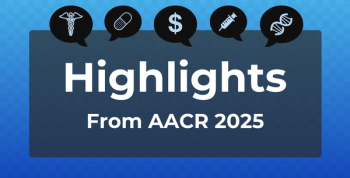
Evaluating Use and Impact of High-Efficacy Multiple Sclerosis Treatments
Currently, there is no universally accepted treatment standard for multiple sclerosis (MS), but 2 abstracts being presented at the American Academy of Neurology annual meeting evaluated the use and impact of highly effective therapies.
Currently, there is no universally accepted treatment standard for multiple sclerosis (MS). Abstracts being presented at the American Academy of Neurology annual meeting evaluated the use of highly effective therapies.
There are 2 approaches to treat MS: using modestly effective treatments early in the disease and escalating to more powerful treatments as the disease progresses or using the most powerful therapies early on in the disease. These 2 approaches are still being studied to understand which one works best, Daniel Ontaneda, MD, a neurologist at the Cleveland Clinic, an author on the first abstract,
The first abstract1 found that while use of highly effective therapies has increased in MS, this strategy is used in a minority of patients. The authors analyzed changes in prescribing practices of highly effective treatments by using the MSPATHS database to collect demographics, MS disease history, and neuroperformance tests from 10 academic centers in the United States and Europe. They assessed the proportion of high-efficacy treatments (natalizumab, alemtuzumab, ocrelizumab, or rituximab) and low- or moderate-efficacy treatments (any other FDA-approved therapy) being used in the relapsing remitting MS (RRMS) population and the treatment-naïve population from 1993 to 2018.
The researchers included 5520 patients with RRMS, and they found that in 2006, the utilization of high-efficacy treatment was 27.3%, which increased to 43.8% in 2018. For treatment-naïve patients, the first use of a high-efficacy treatment was not until 2009 (9.5%). By 2018, use was at 32.3% in this population.
High-efficacy therapy “only accounts for about a third of first-line treatments used,” the authors concluded. “Treatments strategies continue to significantly vary, and more evidence is needed to inform treatment approaches.”
In the second abstract,2 the authors compared oral (fingolimod or dimethyl fumarate) and infusible (natalizumab or rituximab) disease-modifying therapies and identified baseline characteristics associated with future disease activity. They followed patients with RRMS at the Rocky Mountain MS Center at the University of Colorado who were taking fingolimod, dimethyl fumarate, natalizumab, or rituximab, and they followed the patients for 24 months or until drug discontinuation.
A total of 1004 patients were analyzed (509 on oral therapy and 495 on infusible therapy). Patients in the oral group experienced greater disease activity than those in the infusible group (36.4% vs 21.2%).
Compared with those who did not experience disease activity, patients in the oral group who experienced disease activity were younger, had lower disease duration, and were more likely to have gadolinium enhancing lesion (GdE) on baseline magnetic resonance imaging. Patients younger than 45 years were more likely to experience disease activity overall, clinical relapse, new T2 lesion, or GdE compared with patients age 45 or older.
In the infusion group, patients experience disease activity were also younger and more likely to have GdE at baseline, but regardless of age, patients had similar odds of experiencing disease activity overall, clinical relapse, new T2 lesion, or GdE.
“Higher efficacy therapies appear to have a disproportionately larger effect on younger patients,” the researchers concluded.
References
1. McGinley M, Thompson N, Weber M, Bermel R, Ontaneda D. Trends in the use of highly effective disease modifying treatments in multiple sclerosis over 12 years across 10 sites. Presented at: American Academy of Neurology 2019 Annual Meeting; May 4-11; Philadelphia, Pennsylvania. Abstract S26.003.
2. Vollmer B, Nair K, Sillau S, Vollmer T, Corboy J, Alvarez E. Higher efficacy therapies appear to have a disproportionately larger effect in younger patients with multiple sclerosis. Presented at: American Academy of Neurology 2019 Annual Meeting; May 4-11; Philadelphia, Pennsylvania. Abstract S6.005.
Newsletter
Stay ahead of policy, cost, and value—subscribe to AJMC for expert insights at the intersection of clinical care and health economics.









































